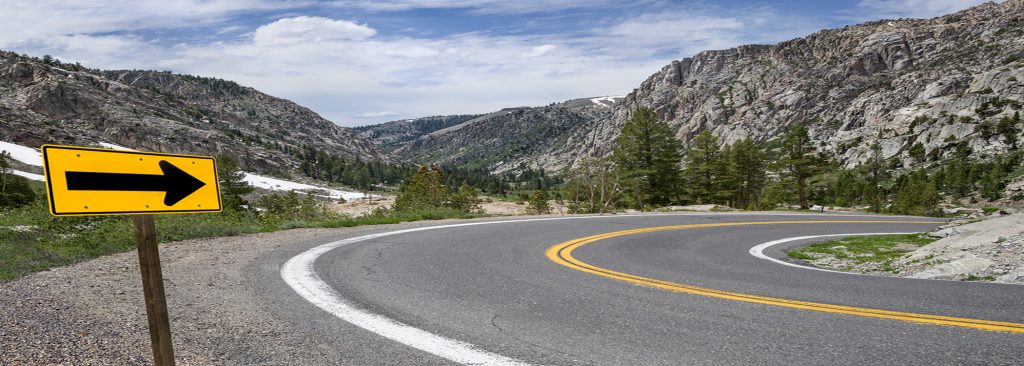Tips for Driving on Mountain Roads

A sign points the way along a winding road through the Sierra Nevada Mountains.
Driving on mountain roads can be challenging. Mountain roads have steep hills, winding roads, blind curves, and low shoulders.
Mother Nature is much more active and can be extreme in the mountains. You’ll be dealing with new sets of challenges such as extreme weather conditions: a sudden surprise snowstorm, extreme cold, icy roads, high winds, a deer running across the road, and even a possible rockslide.
When you drive on mountain roads, you must be especially aware of your vehicle’s condition and your speed. Consider the condition of your brakes, steering system, suspension, and cooling system. They must all be in good condition for safe driving.
Never drive too fast for road conditions or the weather, even if your speed is lower than the posted limit.
Keep a lookout for signs on mountain roads. You should look for speed limit signs, as well as warning signs for curves, steep hills, and road hazards.
If you’re driving on a narrow mountain road, you must drive as far to the right as reasonably possible. If you can’t see 300 feet ahead of you on a road, honk your horn to warn approaching drivers.
Driving on a steep downhill will put a lot of strain on your car’s brake system and driving on a steep uphill will put a lot of strain on your car’s engine.
Tips for driving on steep downhill:
- When you drive down a steep hill, your speed will increase. Don’t use your brakes continually or overuse your brakes; instead, switch to a lower gear and apply your brakes gradually to slow down.
- Use your mirrors to look for large trucks, runaway trucks and buses that may be approaching too fast and get out of their way safely so they can go by.
Tips for driving on steep uphill:
- If your car is struggling to go uphill and you cannot stay with the flow of traffic, switch to a lower gear.
- If the weather is hot and you have a long, steep uphill drive, roll down your windows and turn of your air conditioning to prevent your vehicle from overheating. Keep your eyes on your vehicle’s engine temperature gauge; if you notice that your engine is overheating, safely pull over and let your car’s engine cool down.
One-Lane Mountain Roads and High Altitudes
If two vehicles meet on a steep road that is too narrow for one to pass, the driver traveling downhill must back up so the vehicle traveling uphill can pass. The driver facing downhill has greater control when reversing, so he or she must reverse.
Your friends at Apollo Insurance Services wish you a safe & fun trip to the mountains!
